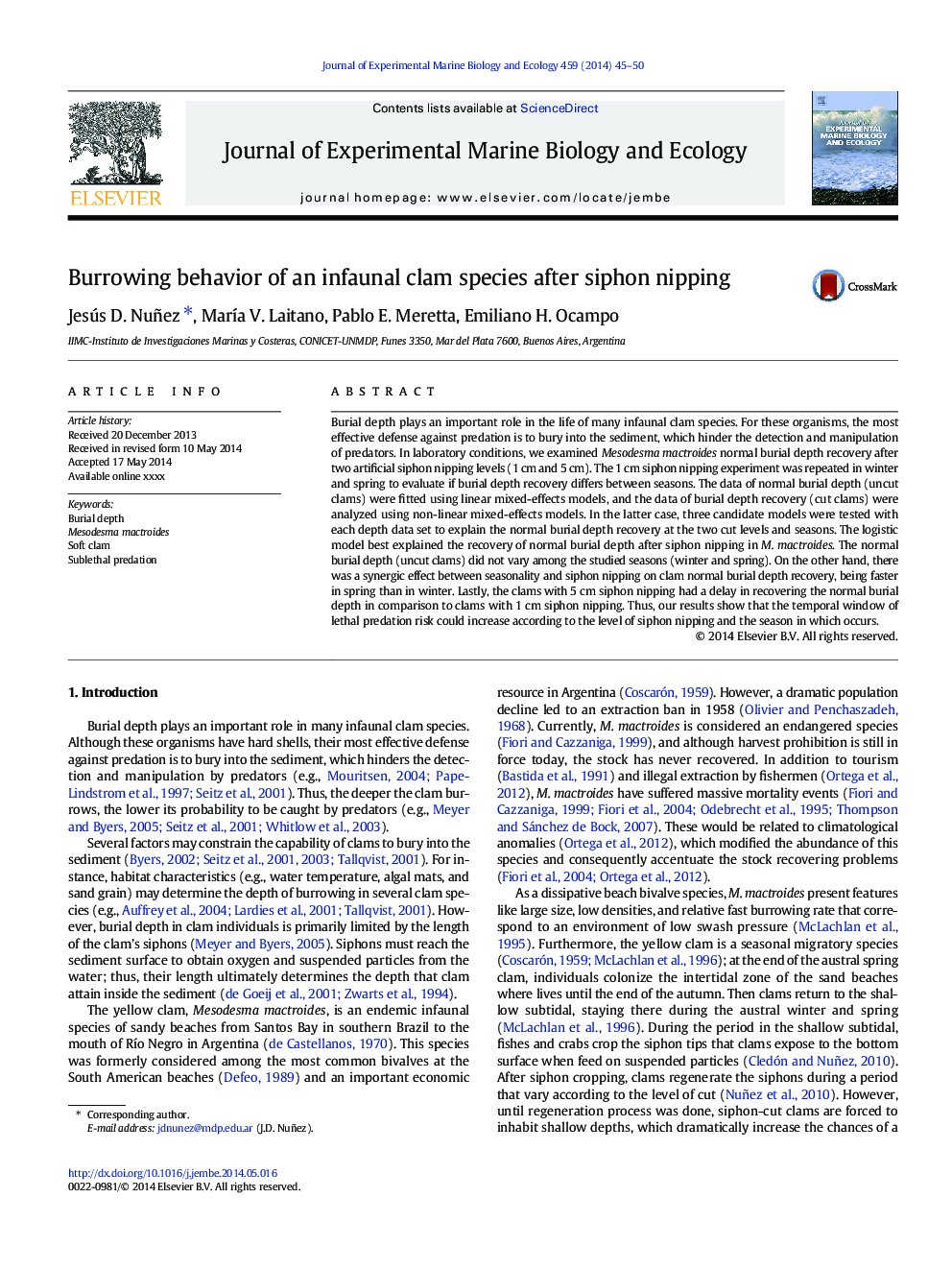| کد مقاله | کد نشریه | سال انتشار | مقاله انگلیسی | نسخه تمام متن |
|---|---|---|---|---|
| 6304101 | 1618416 | 2014 | 6 صفحه PDF | دانلود رایگان |
عنوان انگلیسی مقاله ISI
Burrowing behavior of an infaunal clam species after siphon nipping
ترجمه فارسی عنوان
پس از خوردن سیفون، رفتار خزنده ی یک گونه ی جلبک دریایی
دانلود مقاله + سفارش ترجمه
دانلود مقاله ISI انگلیسی
رایگان برای ایرانیان
کلمات کلیدی
موضوعات مرتبط
علوم زیستی و بیوفناوری
علوم کشاورزی و بیولوژیک
علوم آبزیان
چکیده انگلیسی
Burial depth plays an important role in the life of many infaunal clam species. For these organisms, the most effective defense against predation is to bury into the sediment, which hinder the detection and manipulation of predators. In laboratory conditions, we examined Mesodesma mactroides normal burial depth recovery after two artificial siphon nipping levels (1Â cm and 5Â cm). The 1Â cm siphon nipping experiment was repeated in winter and spring to evaluate if burial depth recovery differs between seasons. The data of normal burial depth (uncut clams) were fitted using linear mixed-effects models, and the data of burial depth recovery (cut clams) were analyzed using non-linear mixed-effects models. In the latter case, three candidate models were tested with each depth data set to explain the normal burial depth recovery at the two cut levels and seasons. The logistic model best explained the recovery of normal burial depth after siphon nipping in M. mactroides. The normal burial depth (uncut clams) did not vary among the studied seasons (winter and spring). On the other hand, there was a synergic effect between seasonality and siphon nipping on clam normal burial depth recovery, being faster in spring than in winter. Lastly, the clams with 5Â cm siphon nipping had a delay in recovering the normal burial depth in comparison to clams with 1Â cm siphon nipping. Thus, our results show that the temporal window of lethal predation risk could increase according to the level of siphon nipping and the season in which occurs.
ناشر
Database: Elsevier - ScienceDirect (ساینس دایرکت)
Journal: Journal of Experimental Marine Biology and Ecology - Volume 459, October 2014, Pages 45-50
Journal: Journal of Experimental Marine Biology and Ecology - Volume 459, October 2014, Pages 45-50
نویسندگان
Jesús D. Nuñez, MarÃa V. Laitano, Pablo E. Meretta, Emiliano H. Ocampo,
